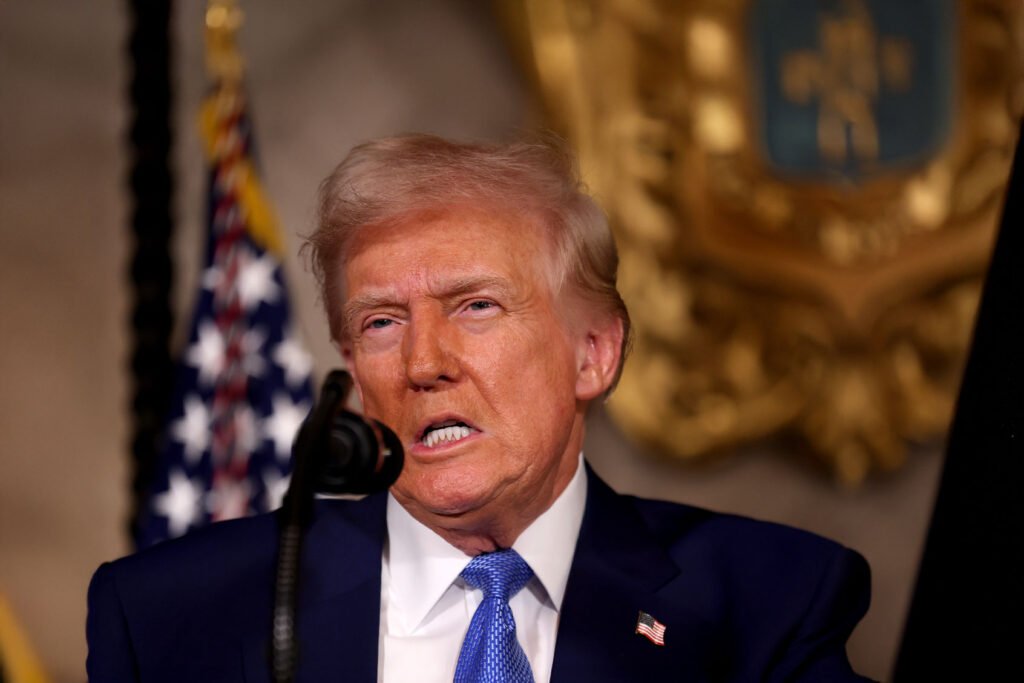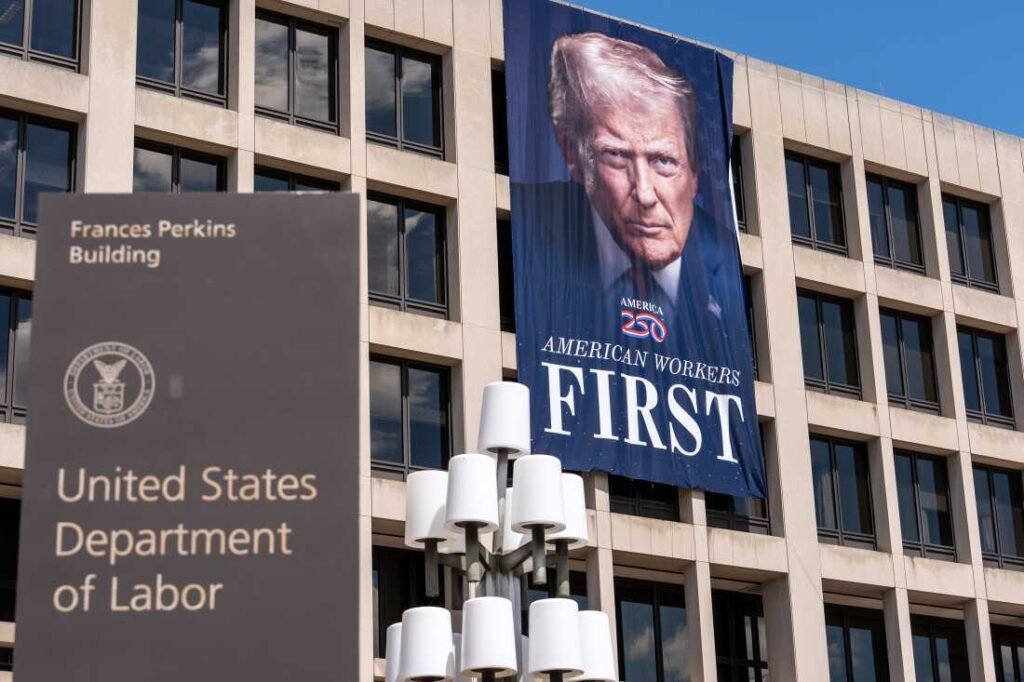The U.S. government shutdown began at midnight on October 1, 2025, due to a failure by Congress to pass a funding bill. This marks the first shutdown in nearly seven years and could lead to mass layoffs of federal workers, with about 40% (roughly 750,000) projected to be furloughed or laid off. President Donald Trump has threatened significant job cuts, describing the shutdown as an opportunity to eliminate “deadwood” federal workers and save billions of dollars. The White House has announced that layoffs of federal employees will begin imminently, possibly within two days of the shutdown starting. The shutdown has resulted from partisan deadlock, with Republicans and Democrats unable to agree on budget provisions, particularly regarding healthcare subsidies and Medicaid cuts.
Key points include:
- The shutdown started after the Senate rejected a short-term spending bill that the House had approved.
- The government furloughs could cost $400 million daily, disrupt various government services, delay military pay, and halt some scientific studies.
- Trump’s administration sees the shutdown as a chance to reduce the federal workforce permanently and reshape budgets by cutting programs favored by Democrats.
- Vice President JD Vance and White House officials have warned that layoffs will maintain only essential services, a departure from previous shutdown practices.
- Senate Democrats oppose the Republican bill mainly due to healthcare benefit cuts and want independent negotiations on that matter.
- Further votes to resolve the shutdown are planned but have faced obstacles, with little willingness on either side to compromise so far.
This shutdown is expected to have a wider impact compared to past ones, affecting hundreds of thousands of federal workers and key public services, with the looming threat of permanent federal job cuts as part of President Trump’s broader federal workforce reduction strategy.
Which federal services are affected first by the shutdown

The federal services affected first by the 2025 government shutdown include:
- Hundreds of thousands of federal employees are being furloughed and will be temporarily suspended without pay. Approximately 40% of federal employees—around 750,000—are expected to be furloughed or laid off.
- Essential or “excepted” employees, such as FBI and CIA agents, will continue working to protect life and property but will not be paid until the shutdown ends.
- Social Security Administration will continue providing disability and retirement benefits as it is funded through mandatory spending, but 12% of its workforce will be furloughed and marketing efforts halted.
- Medicare and Medicaid programs will remain operational through mandatory funding.
- The US Postal Service will remain fully operational, since it funds itself from service revenue rather than tax dollars.
- Air traffic controllers (around 13,000) and most Transportation Security Administration (TSA) staff will continue working but without pay.
- Federal courts may soon exhaust funds to operate fully, likely ceasing full function after October 17.
- Military personnel (approximately 2 million) will remain on active duty but will not be paid during the shutdown.
Non-essential services and many federal departments will be shut down or have significant staffing reductions, causing disruptions in various functions such as marketing, routine maintenance, public communication, and some government offices closing regionally. Critical emergency services and safety-related federal agencies continue but unpaid until funding is restored.
Shutdown explained: Who works, who doesn’t and how much it costs
During the 2025 U.S. government shutdown, roughly 40% of federal employees (about 750,000) are furloughed, meaning they are temporarily suspended without pay. However, certain essential or “excepted” employees continue working without pay, including FBI and CIA agents, military personnel, air traffic controllers, border protection agents, and Transportation Security Administration (TSA) staff. These workers maintain functions critical to protecting life and property.
Key points about who works and who doesn’t:
- Essential services continue: Social Security, Medicare, Medicaid, veterans’ benefits, disaster relief, and the U.S. Postal Service remain operational since they are funded through mandatory spending or fees.
- Non-essential federal services are suspended or scaled back, including many departments such as Commerce, Agriculture, Health and Human Services, and National Park Services. For example, many National Park Service operations and scientific research programs are halted.
- The Internal Revenue Service (IRS) operates with reduced staff and certain functions may be delayed.
- Military personnel stay on active duty without pay; courts may face funding exhaustion by mid-October.
- Some agencies furlough 20-40% or more of staff, affecting services like grant funding, clinical trials, and program administration.
- The shutdown is estimated to cost the government about $400 million daily in lost wages and economic disruption.
Overall, critical safety, law enforcement, and mandatory-benefit programs run uninterrupted, but many public-facing and research services face severe disruption or closure. The White House has warned of possible permanent layoffs beyond standard furloughs, aiming to cut federal jobs and spending amid the stalemate in Congress.
How long have past shutdowns lasted and their economic costs
Past U.S. government shutdowns have varied widely in duration and economic impact:
- The longest shutdown lasted 35 days, from December 2018 to January 2019, during Trump’s first presidency. It led to about 380,000 furloughed federal workers and additional unpaid workers required to work, disrupting many government services. The Congressional Budget Office (CBO) estimated this shutdown cost the economy roughly $11 billion in GDP reduction, with about $3 billion lost permanently. It also accrued $3 billion in back pay for furloughed workers and $2 billion in lost tax revenue due to IRS delays.
- Two shutdowns in the winter of 1995-1996 lasted 26 days combined, caused by disputes between President Bill Clinton and the Republican-controlled Congress. These shutdowns similarly disrupted government services including national parks closures and delayed benefits, but costs were less well quantified at the time.
- The 16-day shutdown in 2013 was triggered by a budget standoff over the Affordable Care Act (ACA). This shutdown closed national parks, delayed food and hazardous waste inspections, and strained air travel due to TSA staffing issues. The Office of Management and Budget (OMB) found it cost about $2.5 billion in federal employee pay during furloughs plus $10 million in penalty interest and lost fees. It reduced government revenue and had broader economic effects.
- Shutdowns overall tend to cost money rather than save it due to lost productivity, back pay obligations, disrupted government fees, delayed grants and loans, and economic uncertainty impacting private sector investment. Shutdown-induced disruptions to federal programs, services, and operations carry ripple economic effects, reducing GDP and government revenues temporarily.
- Historically, most shutdowns have lasted only days to a week, with an average length of about eight days and median length around four days. Despite their political firestorms, most have limited long-term impact on the economy, though longer ones have measurable GDP costs.
In summary, government shutdowns vary in length from a few days to over a month, costing billions in lost productivity, pay, and economic growth, with the 2018-2019 shutdown being the most costly and prolonged in recent history.
Trump uses government shutdown to dole out firings and political punishment

President Donald Trump has used the government shutdown in October 2025 as an opportunity to reshape the federal workforce and punish political detractors. Instead of the usual furloughs, the administration has threatened imminent layoffs of federal workers. The White House has also put on hold around $18 billion in infrastructure funds for projects like New York’s subway and Hudson Tunnel, located in the districts of Democratic leaders such as Chuck Schumer and Hakeem Jeffries, signaling a politically targeted move. Office of Management and Budget (OMB) Director Russ Vought, a key figure behind the budget cuts and the conservative Project 2025 policy guide, informed House GOP lawmakers that layoffs would start soon. These measures extend earlier government efficiency initiatives under Elon Musk and are seen by critics as intentionally punitive to Democrats. The shutdown is expected to furlough roughly 750,000 federal workers, causing severe economic effects including loss of wages and dampening overall economic output.

